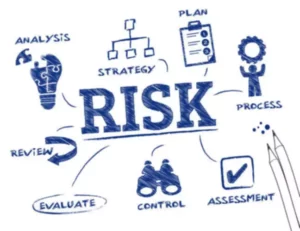Content

The NRV, as it also known, is calculated by subtracting any expenses that were incurred getting an item ready for sale from the sales price. Cost accounting is used by a business for internal reporting purposes to make management decisions. A manufacturing business would use cost accounting analyses extensively to maximize profits.
What is cost and net realizable value?
NRV, in the context of inventory, is the estimated selling price in the normal course of business, less reasonably predictable costs of completion, disposal, and transportation.
It applies to all reporting under both Generally Accepted Accounting Principles (GAAP) and International Financial Reporting Standards (IFRS). So, it’s important to understand the concept, how it is calculated and what it may mean for your financial results. NRV is the estimated selling price in the ordinary course of business, minus costs of completion, disposal, and transportation.
Net Realizable Value Formula
The LCM method states that the cost of inventory must be recorded at the original cost or market price, whichever is lower. The conservative recordation of inventory values is important, because an overstated inventory could result in a business reporting significantly more assets than is really the case. This can be a concern when calculating the current ratio, https://www.bookstime.com/articles/net-realizable-value which compares current assets to current liabilities. Lenders and creditors rely on the current ratio to evaluate the liquidity of a borrower, and so might incorrectly lend money based on an excessively high current ratio. To calculate the sale price per unit for the non-defective units, only the selling costs need to be deducted, which comes out to $55.00.
- Additionally, NRV has application for cost accounting – a branch of accounting that deals with allocating and accumulating the costs of products and processes.
- When it comes to estimating the ending value of an inventory or accounts receivable, what accountants use for a conservative estimate or valuation method is to compute for the Net Realizable Value (NRV).
- If not addressed over more extended periods, such behavior can become a severe problem for the company.
- This means we cannot use the sale price of the basketballs; instead, we use the expected selling price of the relevant market.
In compliance with prevailing accounting regulation, Volkswagen considered net realizable value when determining its inventory value. As economies thrive, clients often have more money at their disposal and are able to pay higher prices. Alternatively, when the economy is down, clients may pass on orders or find it more difficult to make full payments. A large company like Home Depot that has a consistent mark-up can reasonably estimate ending inventory. Home Depot undoubtedly uses a more sophisticated version of this calculation, but the basic idea would be the same.
Accounts Receivable Example
The calculation of NRV is critical because it prevents the overstatement of the assets’ valuation. The net realizable value (NRV) is used to appraise the value of an asset, namely inventory and accounts receivable (A/R). NRV is a conservative method for valuing assets because it estimates the true amount the seller would receive net of costs if the asset were to be sold.
- If the market price is below the NRV, then the market floor is the price used for the comparison.
- An accounts receivable balance is converted into cash when customers pay their outstanding invoices, but the balance must be adjusted down for clients who don’t make payments.
- Cost accounting is used by a business for internal reporting purposes to make management decisions.
- Because it is used in several different situations, net realizable values can tell analysts and accountants several important pieces of information.
- For instance, inventory is recognized on the balance sheet at either the historical cost or the market value – whichever is lower, so companies cannot overstate the inventory’s value.
It also allows managers to better plan and understand whether to stop production at the split-off point or if it is more advantageous to continue processing the raw material. As technology evolves and production capabilities expand, unsold inventory items may quickly lose their luster and become obsolete. This is true for even recently manufactured products; companies not in tune with market conditions may be producing goods that are already outdated.
Net Realizable Value Analysis
This is crucial, as when we sell an item, we have to write-off its cost and its NRV allowance. Employing the NRV method is a way to evaluate inventory and accounts receivable while applying conservatism and following the accounting standards’ stipulations. In inventory, the NRV is used to allocate for the joint costs of the products prior to the split off in order to come up with the sales price of the individual products. Under GAAP, it is expected for the accountants to apply a conservative approach in accounting – make sure that the profits and assets of the company are not valued more than they should.
- A random company (Y) is interested in buying basketballs from business X.
- When it does so, it reports an expense for the amount added to the allowance.
- When valuing inventory, GAAP requires that a conservative approach to inventory valuation must be used.
- Further, the open market selling price is usually so much higher than the book value that, even after deducting the costs to get ready for sale, NRV is higher than book value.
- In compliance with prevailing accounting regulation, Volkswagen considered net realizable value when determining its inventory value.
As prices are elevated, the government may choose to combat rising prices. However, this leads to a contracting economy that increases unemployment. In either situation (high inflation or high unemployment), it may be more difficult for clients or businesses to find budget for additional goods to buy. Depending on the industry the company is it, the company may decide to accept a certain amount of uncollectable sales.
Understanding Variance Analysis
For instance, inventory is recognized on the balance sheet at either the historical cost or the market value – whichever is lower, so companies cannot overstate the inventory’s value. In practice, the NRV method is most common in inventory accounting, as well as for calculating the value of accounts receivable (A/R). NRV for accounts receivable is a reference to the net amount of accounts receivable that will be collected.

So, if the market price of an item falls between these two figures, then it is deemed an acceptable price. If the market price is above the ceiling, then the price to be used for the LCM comparison is the NRV. If the market price is below the NRV, then the market floor is the price used for the comparison. NRV considers two factors for measuring value — an asset’s fair market value (FMV) and the costs to sell or obtain that value.
Market Demand
However, changes in collectability can cause the FMV of the AR to change. Customer liquidity problems and bankruptcies, poor overall economic conditions and subpar collection processes are all factors that could cause an AR balance to become partially or fully uncollectible. Moreover, businesses often incur added costs when trying to collect from customers with eroding creditworthiness, such as legal or collection fees. Under these circumstances, a company must reduce the carrying value of an AR to reflect its NRV. The journal entry to make this adjustment increases bad debt expense on the income statement and increases the allowance for doubtful accounts, a contra-receivable account, on the balance sheet.
- The net sales value of the couches will be put as $24,500 on the balance sheet.
- As technology evolves and production capabilities expand, unsold inventory items may quickly lose their luster and become obsolete.
- Under GAAP, it is expected for the accountants to apply a conservative approach in accounting – make sure that the profits and assets of the company are not valued more than they should.
- When determining the market price for LCM, there are certain restrictions that apply.
- NRV is a reality check on inventory valuation by comparing FMV less selling costs to the historical costs on the books.
We do this only if the item has “no sales” to avoid double NRV adjustments. Whenever we assess a need to book a write-down, the next step is to recognize it as an expense item in our profit and loss (Income Statement) and decrease the inventory value in our Balance sheet. An alternative is to separate our inventory into groups of similar items and calculate the Net Realizable Value on an aggregated basis. It is important to note that we might have some ‘good’ items offset the effect of such with NRV issues by doing so. There are no additional guides to separate inventory into groups, other than the items having to be similar.
This means that the net realizable value of your asset is $80,000 ($100,000 – $20,000). It allows them to make informed decisions about their assets and provides insight into the amount of cash that can be generated from selling those assets. When accountants face uncertainties https://www.bookstime.com/ in potential profits or gains, they should not be recorded but uncertainties on expenses and losses must always be recorded. Cost accounting is part of the managerial accounting of a company that aims to capture the production cost of a manufacturing intensive company.


